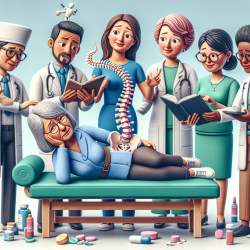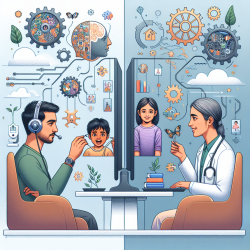Introduction
In the realm of genetic disorders, WOREE syndrome, a severe form of epileptic encephalopathy, has garnered significant attention due to its complexity and impact on patients' lives. Recent research, as outlined in "The phenotypic spectrum of WWOX-related disorders: 20 additional cases of WOREE syndrome and review of the literature," provides valuable insights into the genetic underpinnings and clinical manifestations of this condition. For practitioners, understanding these findings is crucial for improving patient outcomes and guiding future research endeavors.
Key Findings from the Research
The study presents an in-depth analysis of 20 new cases of WOREE syndrome, expanding the known phenotypic spectrum associated with mutations in the WWOX gene. Key findings include:
- Genetic Variability: The study identifies various genetic mutations, including copy-number variations (CNVs) and single-nucleotide variations (SNVs), contributing to the syndrome's severity.
- Clinical Features: WOREE syndrome is characterized by early-onset drug-resistant seizures, absence of language development, and significant motor impairments. The study highlights the correlation between genotype and phenotype, noting that null genotypes often result in the most severe clinical presentations.
- Ophthalmological Involvement: Many patients exhibit ophthalmological issues, including poor eye contact and retinal dystrophy, underscoring the need for comprehensive visual assessments in affected individuals.
Implications for Practitioners
For speech-language pathologists and other practitioners working with children affected by WOREE syndrome, these findings emphasize the importance of a multidisciplinary approach. Here are some practical steps practitioners can take:
- Early Identification and Intervention: Given the early onset of symptoms, practitioners should advocate for early genetic testing and intervention to address developmental delays and optimize patient outcomes.
- Collaborative Care: Working closely with geneticists, neurologists, and ophthalmologists can provide a holistic view of the patient's condition, allowing for tailored therapeutic strategies.
- Focus on Communication: Although language development is typically absent, alternative communication methods, such as augmentative and alternative communication (AAC) devices, can be introduced to support interaction and engagement.
Encouraging Further Research
The study underscores the need for continued research into the WWOX gene and its associated disorders. Practitioners can play a pivotal role by:
- Participating in Research: Engaging in clinical studies and contributing data can help expand the understanding of WOREE syndrome and its management.
- Advocating for Funding: Supporting initiatives that fund genetic research can accelerate discoveries and lead to improved therapeutic options.
Conclusion
WOREE syndrome presents significant challenges, but with a data-driven approach and collaborative care, practitioners can make a meaningful impact on the lives of affected children. By staying informed about the latest research and embracing innovative strategies, we can work towards better outcomes for these patients.
To read the original research paper, please follow this link: The phenotypic spectrum of WWOX-related disorders: 20 additional cases of WOREE syndrome and review of the literature.










